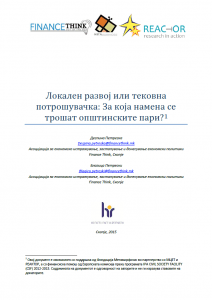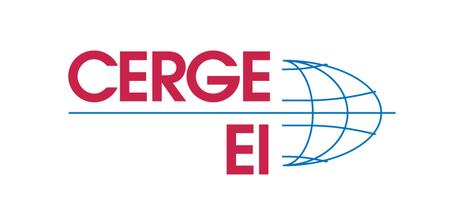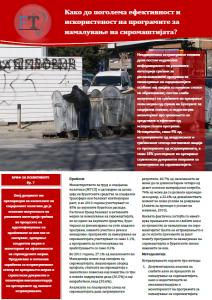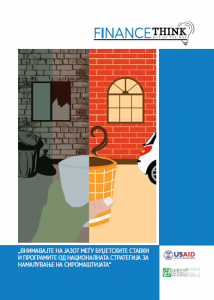The objective of this project is to correctly measure gender pay gaps (difference in wages between men and women) and motherhood pay gaps (difference in wages between mothers and childless women) in Macedonia and to advocate solutions for addressing the prevalent pay gaps.
In particular, previous research has demonstrated that Macedonia faces gender and motherhood wage gaps of 12.5% and 8.7%, respectively. However, a large part of females remains outside the labour market and can therefore not be considered when the pay gap is calculated (as their wage is not observed). This makes the above figures incorrect, since it is likely that females who stay outside the labour market are not randomly selected not to work. Hence, one bold challenge is to obtain knowledge for the proper calculation of pay gaps, i.e. econometric (technical) knowledge to address the selectivity bias in the labour market.
The project envisages activities positioned within three pillars:
- Professional development thorough capacity building and direct knowledge transfer.
- Collaborative research.
- Building networks for advocacy, promotion and collaboration beyond the project cycle.
Donor: Know-how Exchange Program – Austria through the Central European Initiative
Project partner (know-how provider): The Vienna Institute for International Economic Studies
Duration: November 2015 – January 2017
***
Video – The gender wage gap in Macedonia through the perspectives of 5 women
Initial kick-off meeting, Vienna, 21-22 December 2015 – Agenda – Gallery
Training “Econometric methods for survey data”, Vienna, 28-30 January 2016 – Agenda – Gallery
Research stay, Vienna, 31 January – 3 February 2016 – Agenda
Working meeting at the Federal Ministry of Education and Women, Vienna, 1 February 2016 – Gallery
Cartoon competition – Flyer – Call – Gallery & winners
Workshop „Gender and motherhood wage gap: Policies, data and econometric methods“, Skopje, 5 July 2016 – Call – Gallery
Round table “Women in the labor market: Stereotypes and challenges”, Skopje, 6 July 2016 – Invitation and agenda – Press release – Gallery
Research stay, Vienna, 19 – 24 September 2016 – Agenda – Gallery
Research seminars attended at wiiw (Gallery):
- Innovation persistence and firm growth models, Dario Guarashio, University of Rome Sapientsa, 19 September 2016
- On the future of the European Monetary Union: Targeted reforms instead of greater fiscal integration” Ana Iara, European Commission, 20 September 2016
- The space for an industrial policy in Europe, Mario Pianta, 22 September 2016
- Modest recovery in the East – new uncertainty because of Brexit, the economic relations of Austria with the region and the long-term structural changes in the CESEE countries, Mario Holzner, 23 September 2016
- Connectivity in Central Asia – International workshop, 15-16 December 2016.
Working meeting with a gender expert at the Vienna University of Economics and Business, Vienna, 22 September 2016 – Gallery
Research stay, Vienna, 14-15 December 2016 – Agenda
Economic forum: „Gender equal wages for higher economic growth“ – Skopje, 30 January 2017 – Аgenda – Gallery – Gender responsible companies
***
Policy brief 15: The gender wage gap is detrimental for economic growth
Upgrade of EdPlaKo-MK
Manual for proper calculation of the gaps









